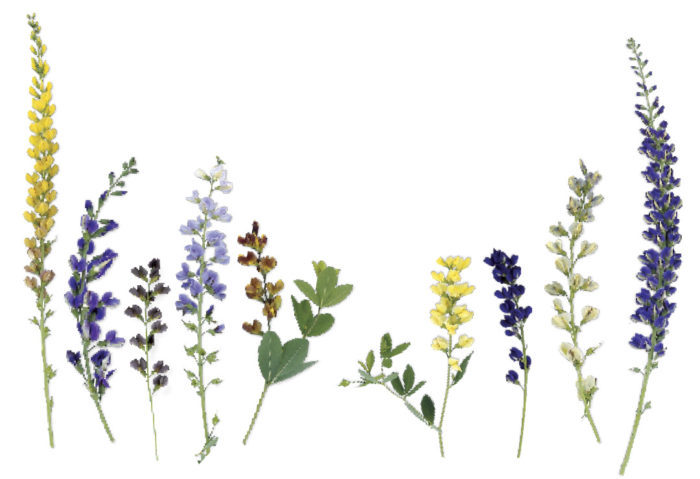
Years ago, I decided to plant a baptisia in my small garden. I was willing to give up precious space to such a large plant in expectation of the vibrant blue spires to come. I nurtured it through its first gawky years only to discover my reward was the saddest blue flowers ever seen. I shouldn’t have been surprised. At that time, many baptisias were commonly grown from seed, which means that flower color, habit quality, and size would, sadly, vary widely from plant to plant.
Baptisias are true American beauties—growing wild and widely throughout much of the United States. I think it’s safe to say that many of the 20-odd wild species are uncommon in gardens, but an interest in these long-lived, stalwart plants has led to a wealth of new hybrid cultivars. Just 10 years ago, ‘Purple Smoke’ and ‘Carolina Moonlight’ were the only ones. Today, thanks to the work of plant breeders’ magic, a plethora of new varieties has emerged with superior traits you can count on. And the best part is that these hybrids are originals, not simply a new dress on an old doll. With these introductions, the color spectrum has been greatly enhanced to include shades of blue, violet, purple, and maroon, creamy white to pure white, palest yellow to screaming yellow, and even pink. And then there’s ‘Lunar Eclipse’, which features many of these colors all at once.
My excitement for the latest baptisias is not only about the expanded color palette but also their rock-solid garden performance. For gardeners, this is great news. There has been too much oohing and aahing in recent years for plants with far less reliability than baptisias. I imagine a purist might give these hybrids the stink eye, but I dare say that seeing one of the new selections at peak bloom will impress even the toughest critic.
At a Glance
Baptisia spp. and cvs.
USDA Hardiness Zones: 3 to 9
Conditions: Full sun; moist, well-drained soil
Bloom time: Late spring to midsummer
Propagation: From seed or tissue culture
Maintenance: Cut back dead stems in late fall or early winter
Top Performers Are Worth the Investment
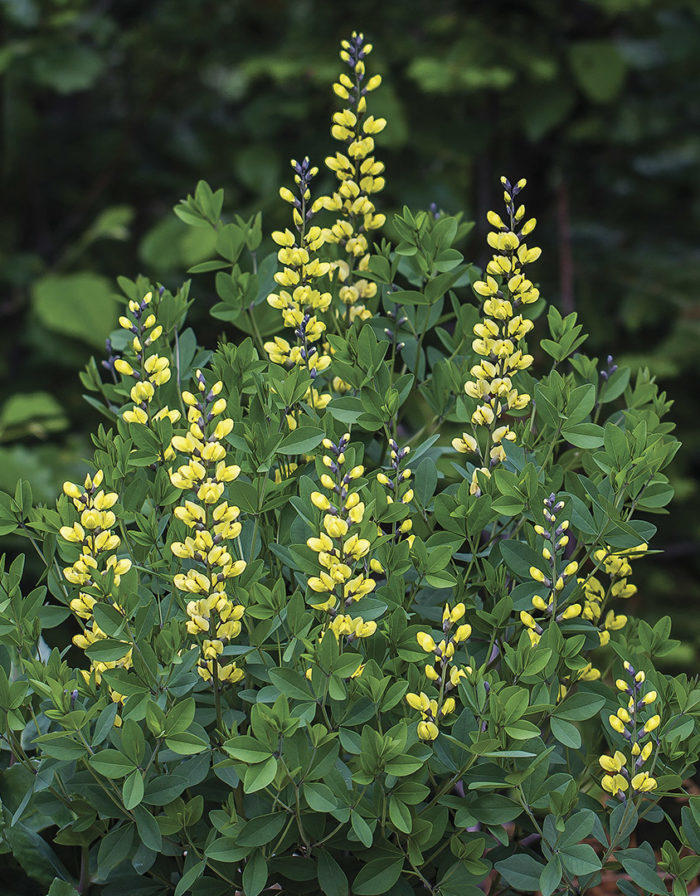
I may have been predisposed to like ‘Lemon Meringue’—my favorite childhood birthday treat was the namesake pie—but from the start, it was a remarkable plant (top above). The strikingly bright and beautiful floral spires draw the eye from a long way off, but up close, the pairing of lemony yellow blossoms and gray-purple calyces and stems is almost sultry. All summer long, the vase like habit, about as tall as it is wide, holds its shape, and the blue-green leaves remain healthy and attractive. We’ve had great success growing ‘Lemon Meringue’ on our green roof, too. The plants haven’t skipped a beat in just 8 inches of growing medium, which is a testament to their drought tolerance and adaptability.
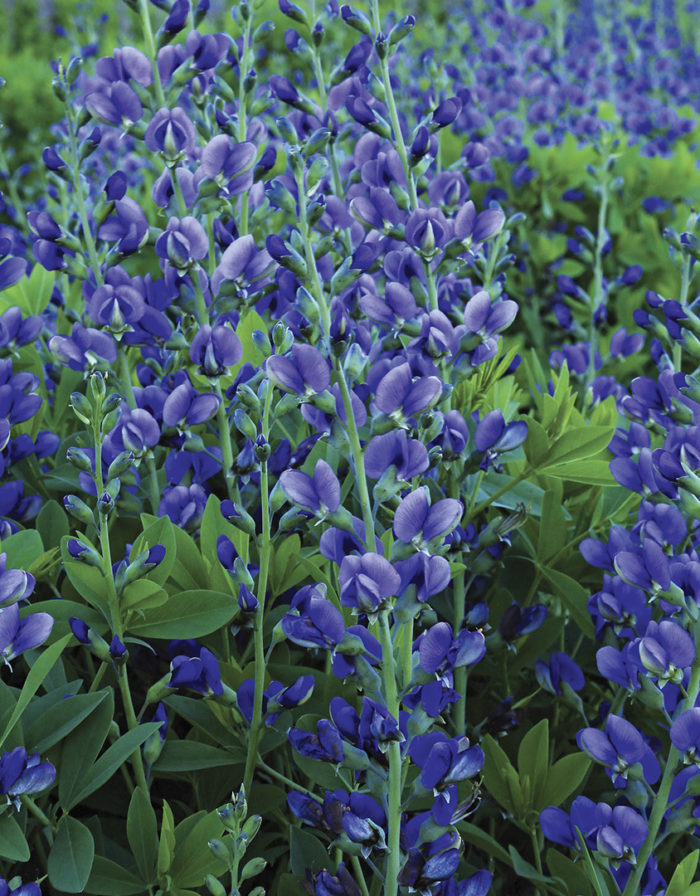
It didn’t take long to realize that ‘Blueberry Sundae’ was the plant I had wanted for my garden all those years ago (photo above). Vibrant violet-blue flowers smother this compact bushy plant each spring. Stout stems are clothed to the base in blue-green leaves that remain attractive all season. Like some other cultivars, the 12-inch-long inflorescences may be hidden a bit among the new leaves. ‘Blueberry Sundae’ was a favorite from the beginning; the most common adjectives Chicago Botanic Garden staffers used to describe it were “beautiful” and “consistent.” ‘Blueberry Sundae’ is part of the Decadence® series, the hallmarks of which are dazzling flower colors and shorter, more compact habits.
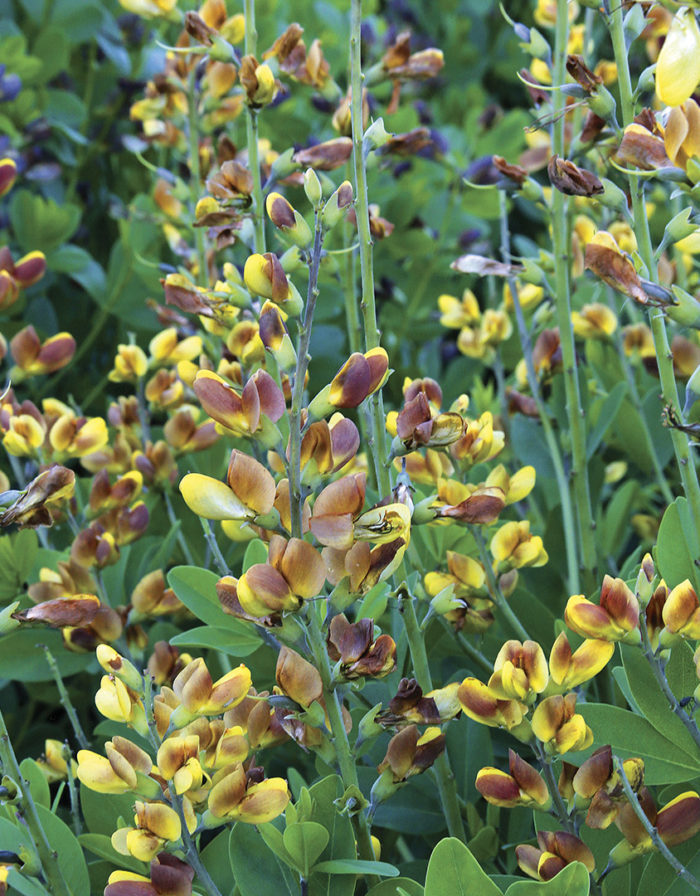
Novelty flower colors, such as chocolatey concoctions like ‘Twilite’ and ‘Dutch Chocolate’, are changing the way gardeners look at baptisias—and brownish flowers in general. The delightful maroon and yellow flowers of ‘Cherries Jubilee’ accentuate this point perfectly . By the way, it’s pretty much as near to red as it gets . . . for now. And for me, it only gets better as the aging flowers turn golden, adding a bit of sparkle before the interesting seedpods form. As if 18-inch-long flower spikes aren’t enough, the branched floral stems mean that even more flowers are produced. The mounded habit was not as dense as ‘Blueberry Sundae’, but equally robust.
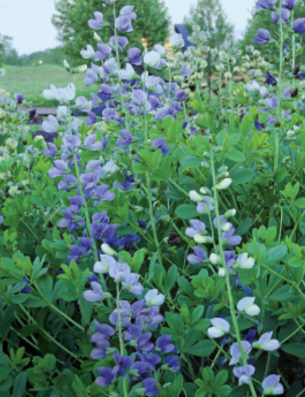
Just one look at ‘Lunar Eclipse’ is enough to recognize its uniqueness—cream flowers open from pale lemony buds, change to light violet, and finally age to medium violet. This successional shift is all the more astonishing because the colors are present at the same time, arranged in banded tiers from the top of the inflorescence to the bottom. The prodigious flower spikes—20 inches long and 3 inches wide—are held vertically above the foliage, maximizing the drama. The assorted colors, stout stems, and loosely vase-shaped habit (with bare ankles as proof) hint at the complexity of its parentage. If I could have just one baptisia, it would be ‘Lunar Eclipse’ or ‘Lemon Meringue’. But who am I kidding? I’d take both.
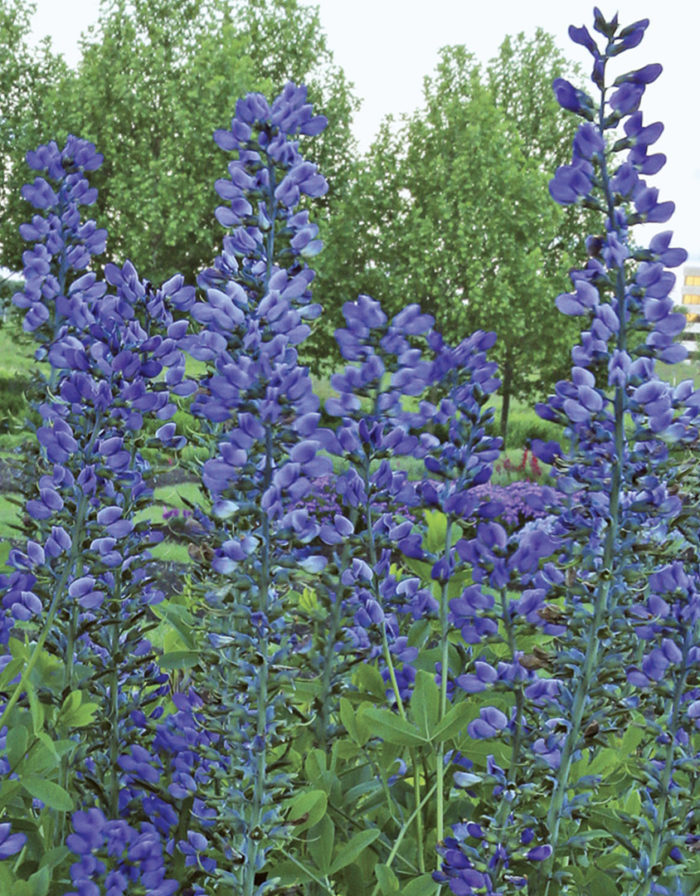
In the case of ‘Blue Towers’, it’s all in the name: extravagant spires—up to 22 inches long—of lavender-blue flowers atop tall, sturdy stems. Taller than wide, its vase-shaped habit is more architecturally commanding than the rounded forms common to other baptisias. Rather than being a shortcoming, the leafless lower stems enhance the elegant habit. Bluish-green leaves are held on chameleon like stems, which start out purple and fade to grayish before finally turning green. ‘Blue Towers’ bulked up quickly, going from a stick in the first year to burly plants by year three.
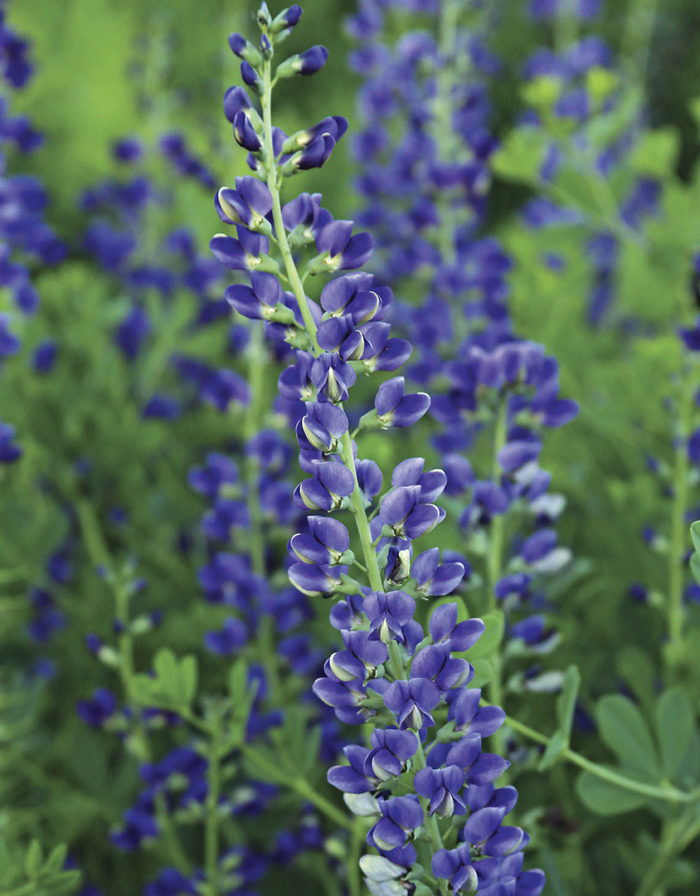
The Prairieblues™ series changed the face of baptisias. ‘Twilite’, ‘Starlite’, and ‘Solar Flare’ were quickly selected from our breeding trials for their exceptional vigor, flower power, and distinctive colors. In a Cinderella moment, ‘Midnight’ happened to catch the eye of Piet Oudolf, who saw something special and encouraged us to look past its gangly adolescence to the promise of greater things to come. Long-legged ‘Midnight’ is strongly vase-shaped in its youth and takes a little longer to fill out than its Prairieblues™ sisters. The dark purple-blue flowers are borne on long tapered spires in late spring to early summer, which is later than most other cultivars begin blooming. Following on the heels of the first flowers, shorter secondary inflorescences extend the bloom season a week or so longer. ‘Midnight’ is proof that good things are worth the wait.
Trial Parameters
Since 1999, the Chicago Botanic Garden has evaluated 39 different baptisias in two trials.
Duration: A minimum of four years
Participants: A variety of species and hybrid cultivars, many of them commercially available only in the past five years
Zone: 5b
Conditions: Full sun; well-drained, alkaline, clay-loam soil
Care: Minimal, allowing the plants to thrive or fail under natural conditions
New Kids to Keep an Eye On
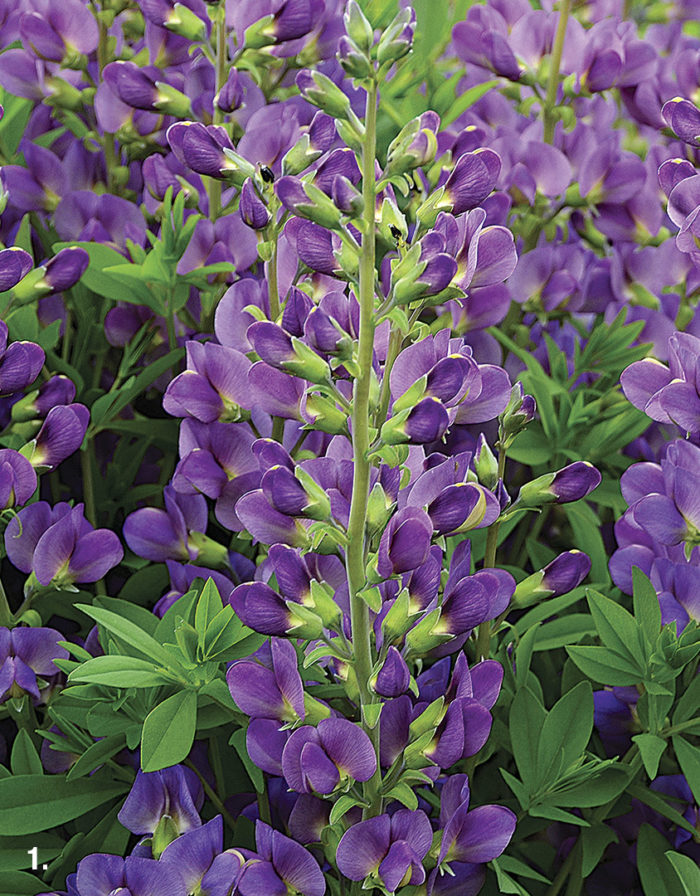
1. ‘Lavender Rose’ has soft purplish-pink flowers, which are another wonderful addition to the baptisia color wheel. In full bloom, accentuated by the distinct vase-shaped habit, ‘Lavender Rose’ looks like a gigantic bouquet. There are so many flowers that some don’t even make it out of the crown. The combination of large individual blossoms (1 inch wide) and brawny vertical inflorescences (18 inches long and 3 inches wide) makes for a winning display.
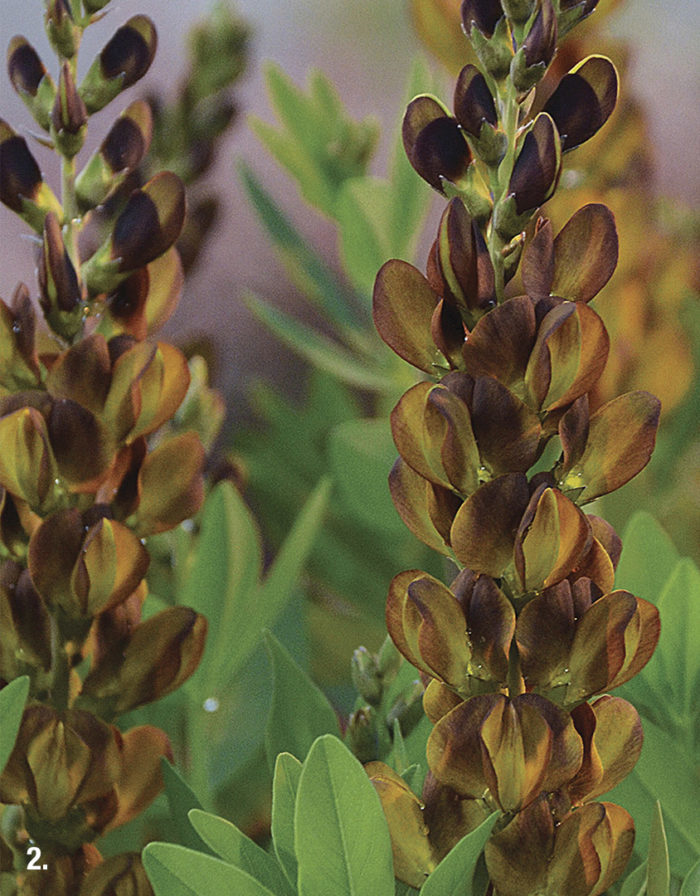
2. The first time ‘Brownie Points’ flowered, I was mesmerized—it was so unexpectedly, but pleasantly, off-base for a baptisia. The caramel-brown flowers feature a yellow keel, but unlike some cultivars, the dark color holds and doesn’t fade to yellow. Our plants are young, so they haven’t yet attained full size, which is expected to be a nicely rounded 36 inches tall and 42 inches wide. We’re also growing ‘Brownie Points’ on our green roof, where it came through its first winter unscathed and put on an exceptional flower show last spring.
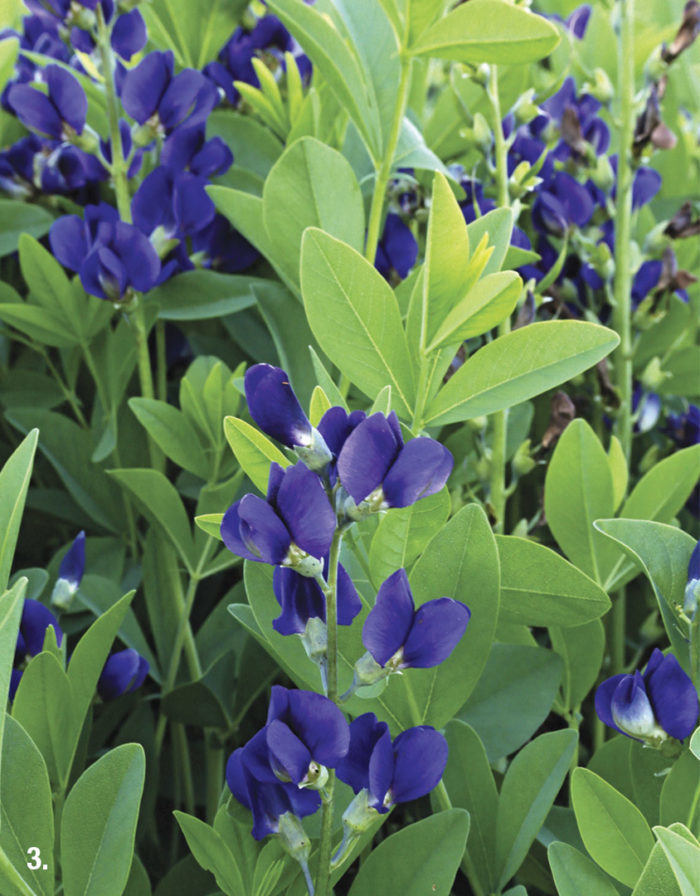
3. ‘Sparkling Sapphires’ is almost too new for me to talk about, but the color blows me away. The rich purple-blue flowers remind me of ‘Royal Purple’, but ‘Sparkling Sapphires’ is touted as having a more compact habit—36 inches tall and wide. This opulent color is a must-have whether on tall or short stems. ‘Sparkling Sapphires’ had a slow start in the trial, but it shows the same promise as other Decadence® series selections.

4. While some baptisias are in-your-face beautiful from the start, ‘Sandstorm’ had to grow on me. Its flower color—light sandy yellow with violet markings that fade with age—seemed a little too flesh-toned at first. My early impressions were of a color variation that had gone too far. But as ‘Sandstorm’ has come of age and is loaded up with flowers, its one-of-a-kind floral display is brilliant. It doesn’t hurt that the inflorescences top out at 24 inches long, the largest in the trial.
Basics
Baptisia 101
These durable, long-lived plants are heat and drought tolerant, and essentially trouble-free. Here’s what else you need to know.
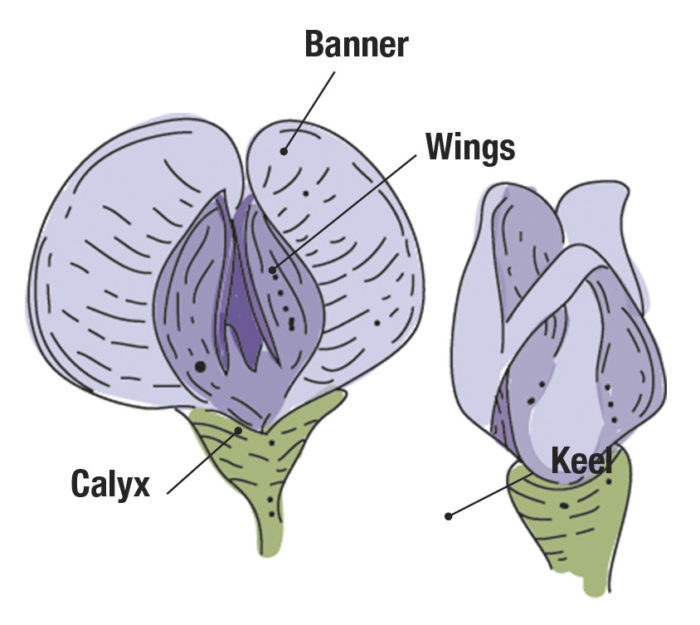
▸ Flowers: You’ll see blossoms show up in mid to late spring. The pealike blooms are held in many-flowered racemes, rising dramatically above or arching outward from the plant. Structurally, the butterfly-shaped flowers consist of the banner, two wings, and the keel—the two lower petals fused together. Flowers open from the bottom first, elongating the inflorescence as upper flowers gradually follow. Baptisias can bloom for up to a month, but their floral display is at the mercy of capricious spring weather. In cool temperatures, vibrant colors and longer bloom times are common. If you blink in a hot spring, though, the flowering season is over. Length of the floral stem is also determined by springtime temperatures.
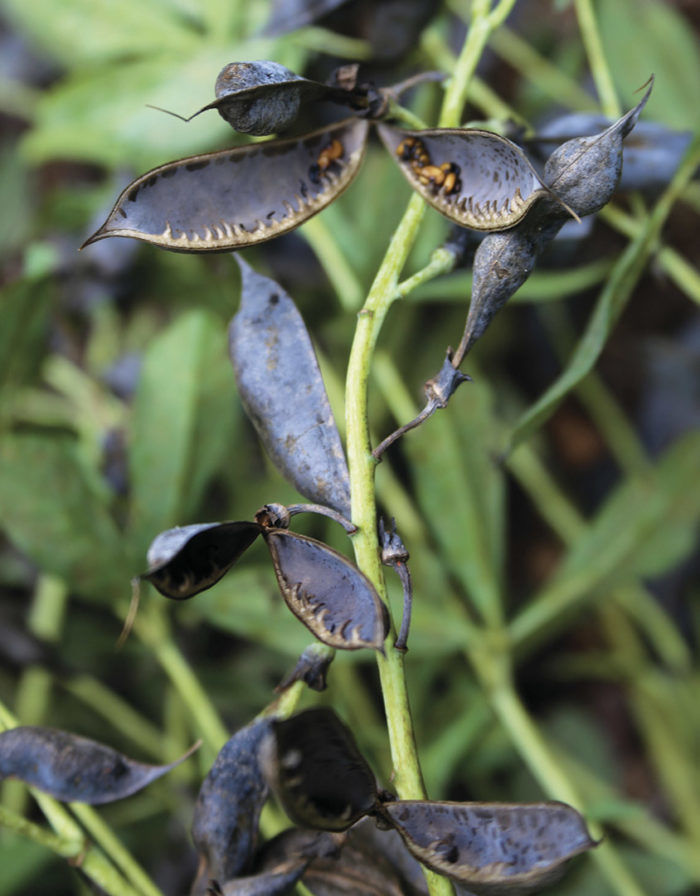
▸ Seeds: Inflated elliptical to spherical fruits follow the flowers, turning black or tan as they ripen. While not classically ornamental, the fruit pods can be striking in form and even rattle a little when coaxed by the wind.
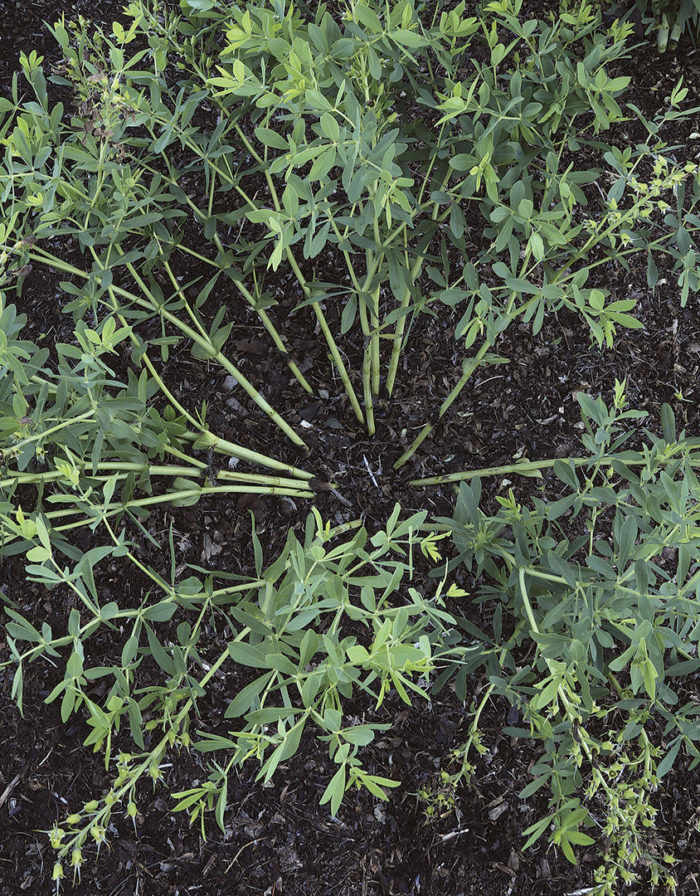
▸ Leaves and habit: These plants have handsome three-part leaves, variable in size, texture, and color—from gray-green to blue-green to just green. The plants are clump-forming with upright vase-shaped to rounded habits ranging in height from diminutive (12 inches) to statuesque (7 feet). Baptisias are both touted and maligned for their large shrublike dimensions; therefore, it’s clear why shorter selections are popular.

▸ Pests and disease: They’re deer resistant, but rabbits can be pesky. Although just cosmetic, fungal leaf spots and powdery mildew may occur. Foliar chlorosis can be a problem for some species growing in highly alkaline soils.
▸ Native status: Many baptisia species are native to much of the United States. Although the ones featured here are hybrid cultivars, many have native parentage in their DNA.
▸ Pollinators: Baptisias are an important source of food and nectar for a variety of butterflies and their caterpillars. Native bees are good pollinators, too; using their size and strength, bumblebees are particularly adept at prying open the flowers to get to the nectar.
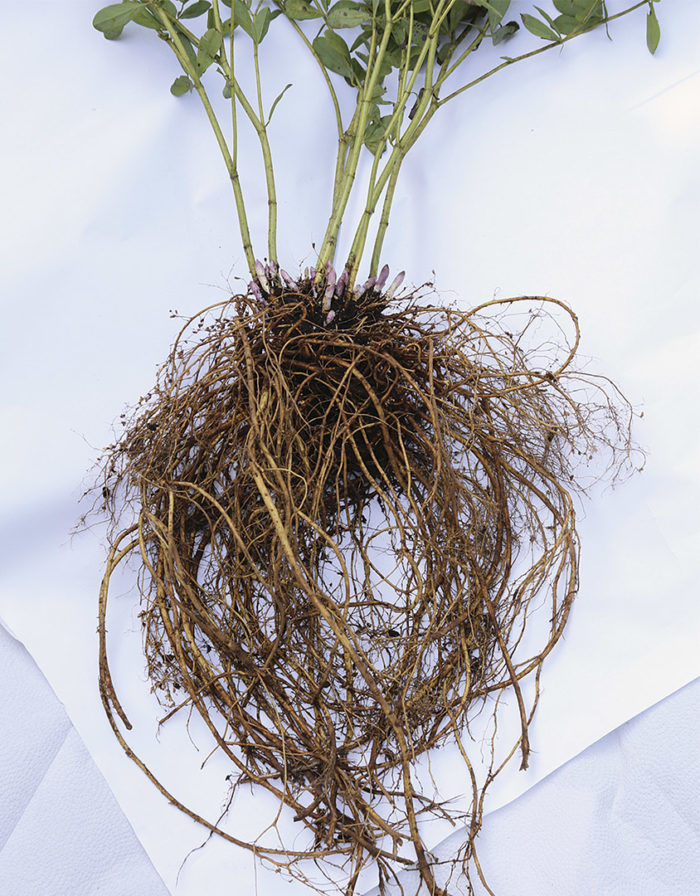
▸ Roots: Like other members of the pea family, the root nodules on baptisias contain a beneficial bacterium (Rhizobium) that converts atmospheric nitrogen to usable nitrogen. While this trait allows baptisias to grow well in poor soils, supplemental nitrogen will promote overly lush growth in fertile soils.
▸ Vigor: While baptisias are often spindly or open in youth, hybridization has accelerated the usual slow growth rates, resulting in stronger, bushier plants that can quadruple in size in a few years. ‘Twilite’ and ‘Solar Flare’ shocked us by producing over 100 stems in just three years—that’s mind-boggling vigor!
Richard Hawke is plant evaluation manager at the Chicago Botanic Garden in Glencoe, Illinois.
Photos: Danielle Sherry; millettephotomedia.com; courtesy of Nathaniel Kahn for Chicago Botanic Garden; courtesy of perennialresource.com. Illustration: Kate Gosselin.
Sources
Bluestone Perennials, Madison, OH; 800-852-5243; bluestoneperennials.com
Plant Delights Nursery, Raleigh, NC; 919-772-4794; plantdelights.com
W. Atlee Burpee & Co., Warminster, PA; 800-888-1447; burpee.com
Fine Gardening Recommended Products

Spearhead Shade Gardening Shovel with Steel-Reinforced Fiberglass Handle
Fine Gardening receives a commission for items purchased through links on this site, including Amazon Associates and other affiliate advertising programs.

Berry & Bird Rabbiting Spade, Trenching Shovel
Fine Gardening receives a commission for items purchased through links on this site, including Amazon Associates and other affiliate advertising programs.

isYoung Birdlook® Smart Bird Feeder with Camera
Fine Gardening receives a commission for items purchased through links on this site, including Amazon Associates and other affiliate advertising programs.


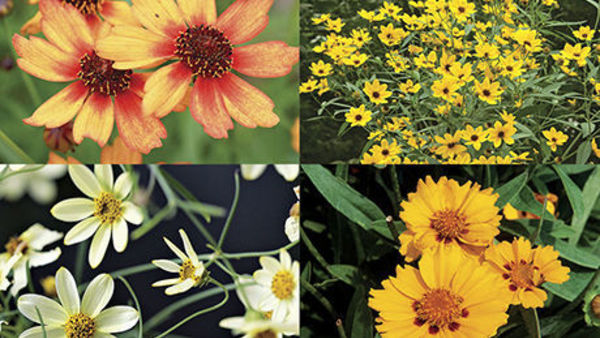
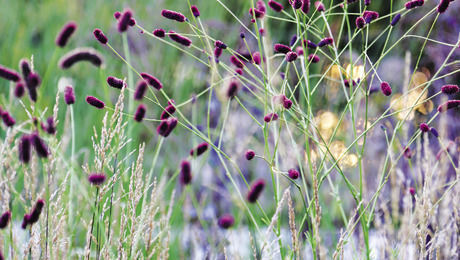
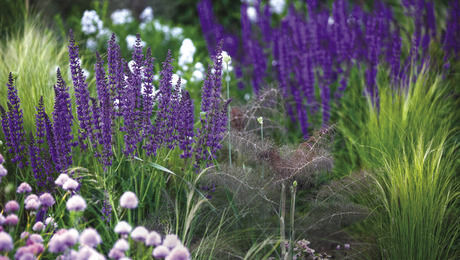
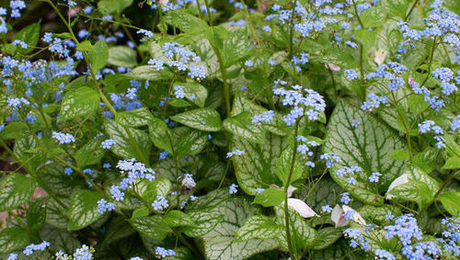













Comments
Log in or create an account to post a comment.
Sign up Log in